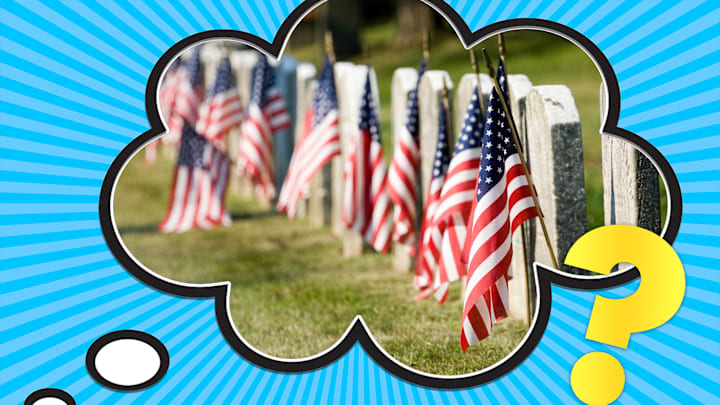Each year, Memorial Day gives Americans the chance to spend a three-day weekend honoring those who sacrificed their lives for this country. Because the holiday always takes place on a Monday, you can do just that.
In 1968, Congress passed the Uniform Monday Holiday Act, which requires a few federal holidays to happen on specific Mondays each year; Presidents Day got shifted to the third Monday in February, for example, while Memorial Day was set for the last Monday in May. TIME reports that Independence Day was also supposed to be moved to a Monday, but the July 4 date was a little too significant to be abandoned for uniformity’s sake. According to Rutgers University history professor Jennifer Mittelstadt, the legislation was mainly enacted because the government thought routine three-day weekends for workers across the nation would give the travel industry a boost.
“Travel organizations had been pushing for three-day weekends like this since the 1950s, and they finally got the employee unions on board and the federal employee unions on board because there was a fair amount of agreement that it’d be good for business,” Mittelstadt told TIME in 2016.
The Uniform Monday Holiday Act was put into practice in 1971, and we’ve been celebrating Memorial Day on a Monday ever since.
- When Is Memorial Day 2025?
- Why Is Memorial Day a Holiday?
- What’s the Difference Between Memorial Day and Veterans Day?
When Is Memorial Day 2025?
This year, Memorial Day will be celebrated on Monday, May 26. Next year, it will occur on Monday, May 25, 2026.
Why Is Memorial Day a Holiday?
By the time the American Civil War ended in 1865, every corner of the country had sustained devastating losses, and tributes to the fallen soldiers began cropping up in individual communities. On May 5, 1868, General John A. Logan, who headed a foundation for Union veterans, declared that the entire nation should come together for a day of remembrance on May 30—a date chosen because no battle had occurred on that day during the war—and decorate the soldiers’ graves with flowers and other tokens to honor their patriotic sacrifice.
“Decoration Day,” as Logan called it, caught on, and every northern state had made it an official holiday by 1890. According to History.com, the southern states also celebrated Decoration Day, but the exact date varied by state.
After World War I, Decoration Day took on a broader significance: Instead of specifically commemorating the Civil War, people started to use the holiday as an opportunity to pay their respects to fallen soldiers from any U.S. conflict. As TIME reports, the holiday was officially renamed “Memorial Day” in 1967, and it became a federal holiday with the ratification of the Uniform Monday Holiday Act the following year.
What’s the Difference Between Memorial Day and Veterans Day?
Veterans Day also honors citizens who have served in the military, but the history behind the holiday is quite different from that of Memorial Day. The first Veterans Day occurred on November 11, 1919, to commemorate the one-year anniversary of the end of World War I. It was originally called “Armistice Day,” but President Dwight D. Eisenhower officially renamed it “Veterans Day” in 1954, to clarify that the holiday was meant to celebrate all veterans, not just those who served in World War I.
The nature of the celebration is a little different, too. Since Memorial Day is specific to soldiers who died while fighting for their country, the holiday has a more sober tone than Veterans Day, which celebrates still-living veterans along with those who have passed away.
Read More Articles About the Military:
A version of this story ran in 2020; it has been updated for 2025.
